You dream about it, but it never seems to happen. The “dream,” of course, is finding a truly rare camera at a bargain price at some out-of-the-way flea market. This dream finally came true for me a few months ago when I stumbled across an Olympus Pen at our little town’s annual garage sale. And I didn’t even realize my luck until I got the camera home and did some on-line research.

Rare Pen variations #2 & #3: The absence of a rewind-direction arrow and a horizontal bar in the film plane indicator that doesn't pass through the circle.
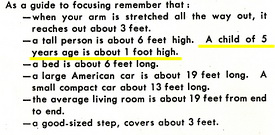
Wait, what?!? Something appears to have gotten lost in translation in the Pen's instruction booklet. I'm pretty sure even in Japan, 5-year-old kids are bigger than that!

The Pen counts exposures down to zero from whatever number of frames you set the arrow to at the start of a roll.
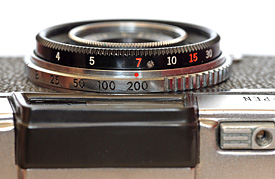
Dials on the lens are for setting the focus distance and exposure speed (7 feet and 1/200 second indicated here). Aperture is controlled by a bezel on the front of the lens.
It turns out that my particular Pen is one of the original, original Pens — it’s from the first production run of the very first version of the camera. As the story goes, the Pen was the debut effort from designer Yoshihisa Maitani, the same guy who was eventually responsible for just about every important Olympus film camera, including the Pen F, the magnificent OM series of SLRs, and the ultra-compact XAs. He was tasked with coming up with a budget model, but as is typical for cameras of this era, the resulting product was made to a level of quality and ruggedness that we seldom see today even in premium offerings.
The first Pens were manufactured in October 1959, not by Olympus, but by a subcontractor, Sanko Shoji. When sales unexpectedly soared, Olympus took over production the following year, after some 30,000 units were sold. The rarest of the early “single-lug” Pens are those, like mine, made by Sanko Shoji. How can you tell these from the ones made later by Olympus? There are several cosmetic giveaways, as shown in the photos at right.
The Pen is a very simple, very compact, solidly built, half-frame camera that’s a real pleasure to use. Although it lacks a light meter and focusing rangefinder, it’s still easy to take pictures with. Focusing is by guestimation, and this is where the genius of the lens design becomes apparent. The 4-element lens’s focal length is only 28mm, which is the “normal” focal length for the half-frame format. But that focal length also yields a generous depth of field, which makes achieving sharp focus relatively easy even if your distance estimates are slightly off. The maximum aperture is only f/3.5, again, making focusing less stringent.
There are a couple of minor usability issues with this model Pen, as there are with every camera. First, you have to remember to set the frame counter when you load in fresh film. The Pen counts down to zero from whatever number you begin with — 72 for a 36-exposure roll, 48 for a roll of 24. Second, you change the aperture setting (which range from f/3.5 to f/22) by rotating a bezel on the front of the lens. When doing so, you have to exercise a modest amount of care to ensure you don’t put a big, greasy fingerprint on the lens. The shutter speeds run from bulb only to 1/200, so you will likely use ISO 100 or 200 film most of the time. Lastly, the Pen lacks a self-timer, so a cable release is necessary for long exposures.
On the plus side, the camera’s Copal shutter is very quiet and produces essentially no vibration. Given the lens’s focal length, you can safely hand-hold shots at 1/50 and probably even at 1/25, the camera’s slowest shutter speed. The other feature I find handy is that the camera focuses down to less than 2 feet. Later models (such as the Pen D) only let you get as close as 2.8 feet. Finally, the original Pen is more compact than some of its siblings. They all have roughly the same body dimensions, but the lens on this model is very low-profile, protruding from the front of the camera by 3/8-inch, making it much easier to slip into your pocket.
It’s a rare camera that actually changes the way I approach picture changing, but the Pen is one of those. The camera’s normal orientation is “portrait,” that is, the long axis of the frame is vertical and the short axis is horizontal. By presenting this as the first option (you have to turn the camera sideways to get a landscape orientation), I find I tend to shoot more “portrait” photos than I normally would — the camera essentially forces me to evaluate that possibility first, even in situations where normally I wouldn’t. This is obviously a personal response to the camera, but I’d be surprised if others don’t experience the same effect. The half-frame format also means I have plenty of shots in a roll, so I tend to be a little more liberal with the kinds of subjects I take pictures of. Sometimes this gives me a photo that I really love, but might not have bothered with if I was being more careful about burning off frames.
The Pen’s main selling feature when it was first introduced was its compact size. It’s unquestionably a pocketable camera (that is, if you don’t mind carrying 350 grams — 12 ounces — in your pocket), but over time full-frame cameras that are both smaller and lighter came along, including Maitani’s own XA series. But that doesn’t mean the Pen is not longer a useful camera — far from it.
As the photos below show, this little beauty is still capable of great results a half-century after leaving the factory. Indeed, thanks to modern, fine-grained films, the Pen and its half-frame brethren can produce even better photos now than was possible back in the day. A half-frame of 35mm film can make excellent 8×10 prints (I’ve made a few myself), but if all you’re interested in is scanning and posting to Facebook or Flickr, the format still yields way more resolution than you’ll ever need. It’s ironic that this camera should reach the zenith of its performance more than five decades after it was first produced!
Oh, and because I know someone will ask, I paid $2 for my Pen. And no, it’s not for sale. But keep your eyes peeled at local yard sales and flea markets — you just never know.
Did you find this article interesting or helpful? If so, consider using this link the next time you shop at Amazon.com. Better yet, bookmark it for future use. Thanks to Amazon’s associates program, doing so costs you nothing yet helps keep this site up and running. Thanks!
For more of my camera reviews, click here.

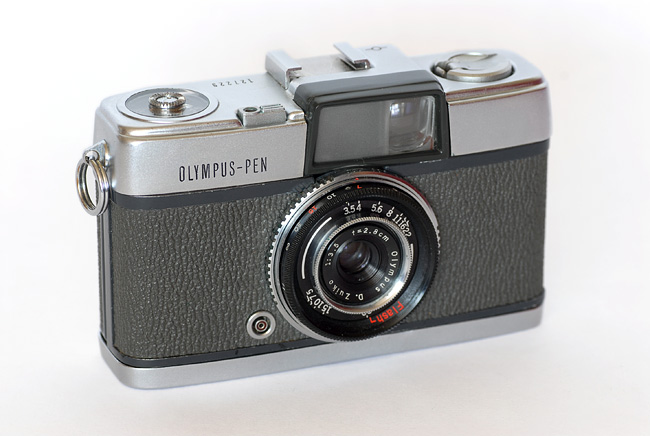
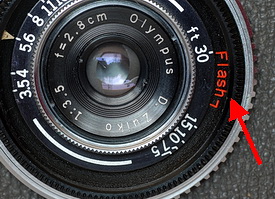
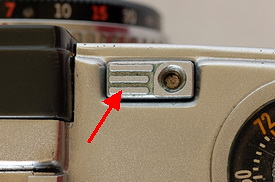
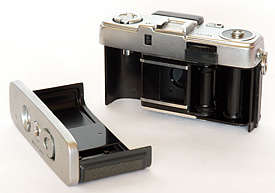
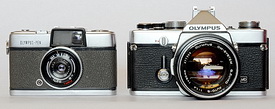
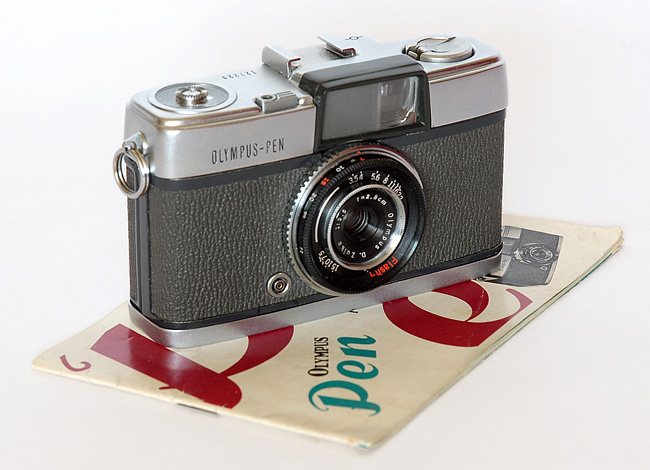
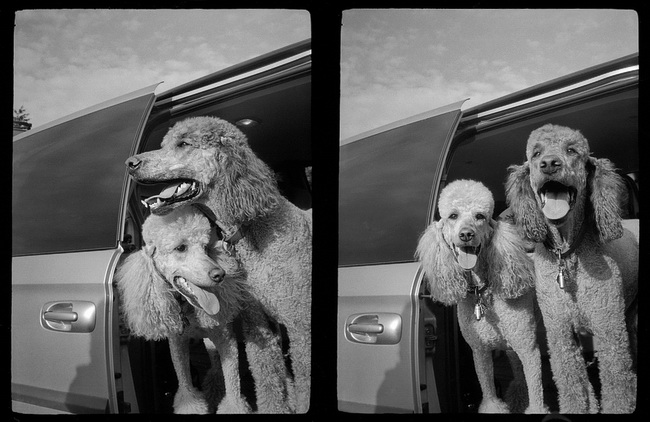
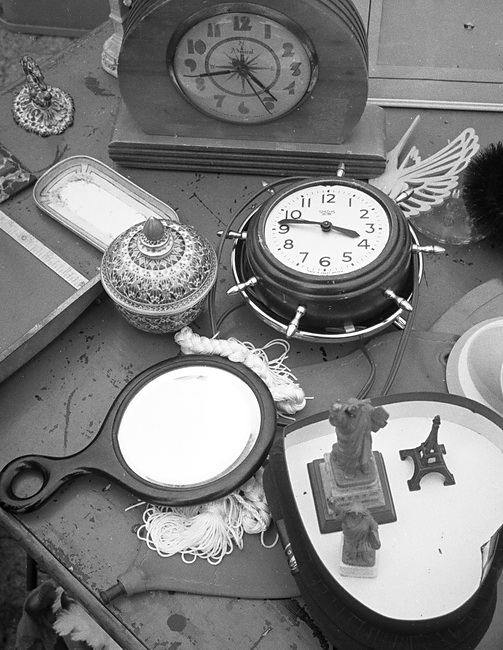
 Subscribe with RSS
Subscribe with RSS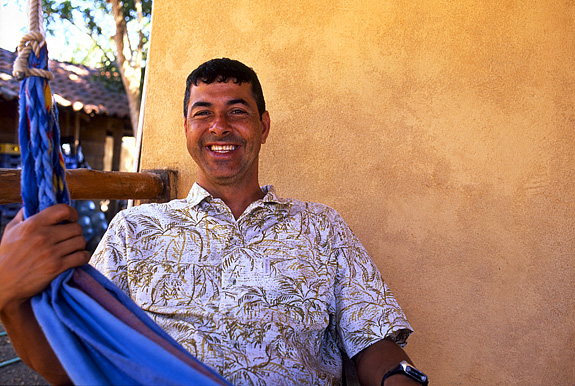
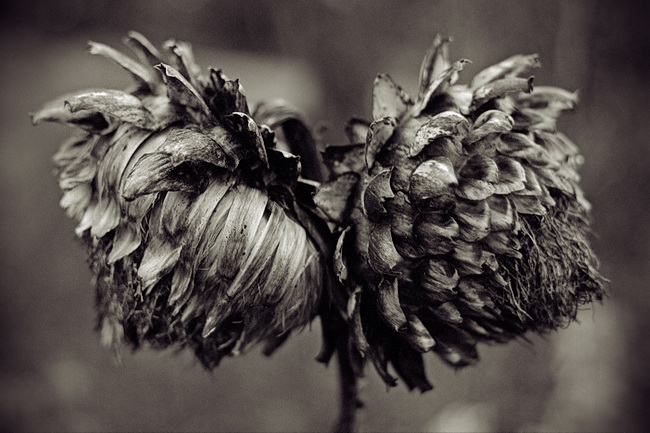
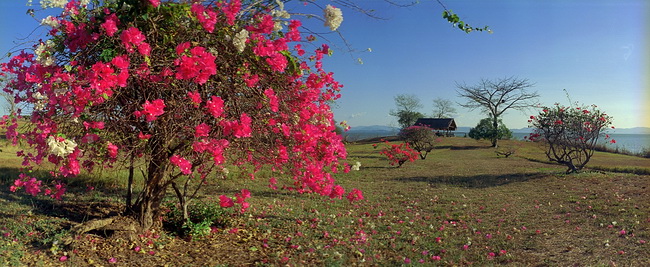

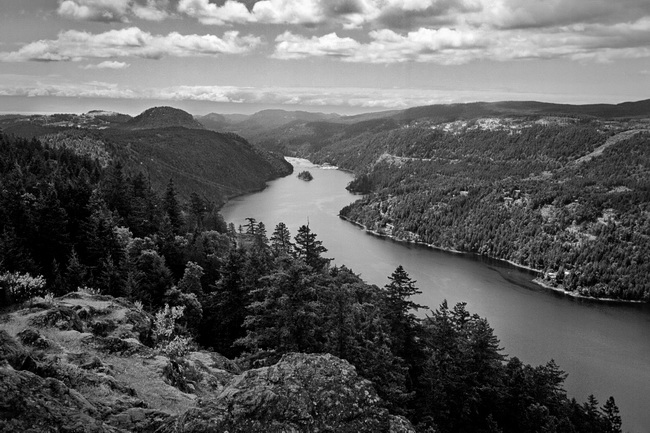
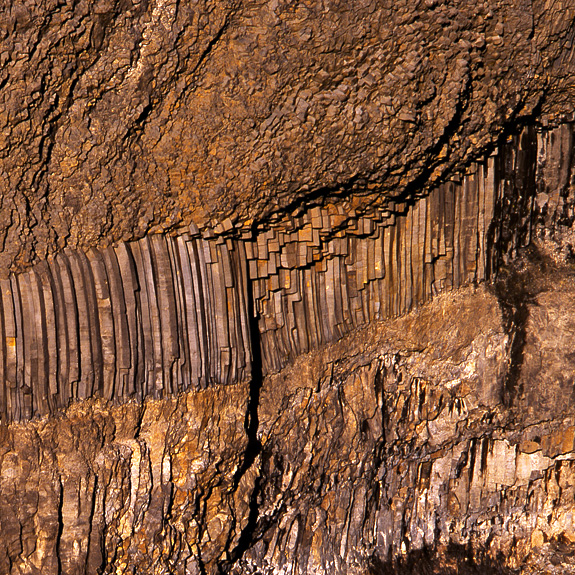
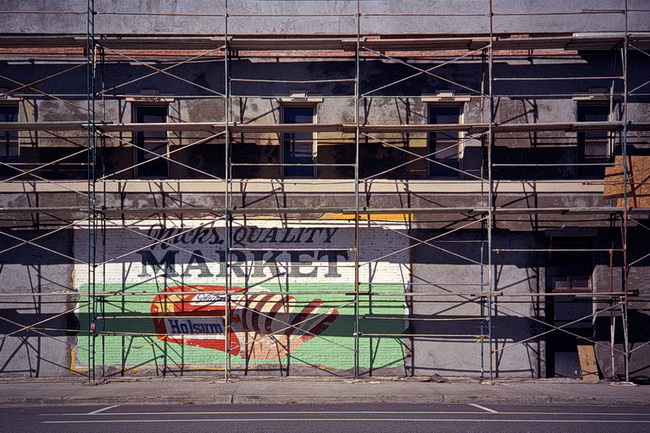
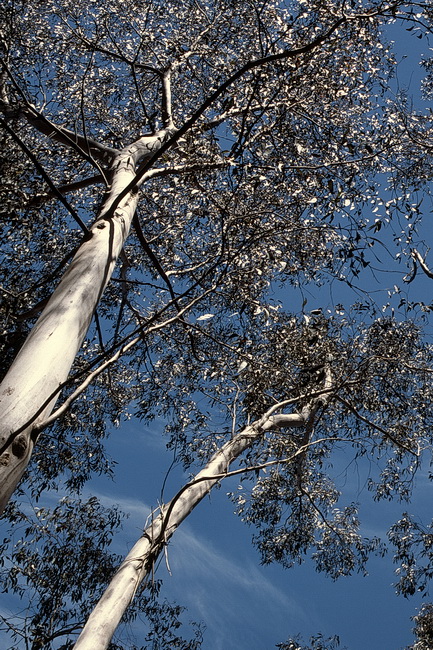
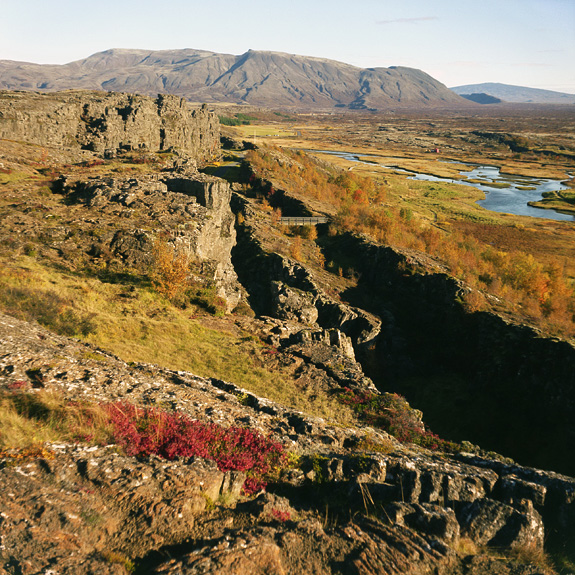

Incredible find! Great images, as well, some of the best Pen snaps I’ve seen. I’m going to be on the lookout for one of these little guys….
Tani — I suspect that any of the Pen series would be capable of similar results, so if you don’t find the exact same model as mine, don’t fret.
A wonderful little camera!
Being a film camera enthusiast myself, I also use Olympus PEN cameras (EES-2 and EE3), and I absolutely agree that one tends to make more portrait photos with this kind of camera: When you take the camera to your eye, the “portrait” format is the camera’s first suggestion, and it often suits the intended photo so well that I don’t even bother to try the landscape format.
I very much enjoy reading your website, it’s simple and clear and yet with high quality content. It’s much appreciated, thanks!
Ralf.
Thanks Ralf!
One of the finest camera, i’ve ever owned!
i began to really shoot seriously with one.
my first front page photo, in the main morning paper.
Love your images.
many assignments after..
Long gone, i really would love another..
The portrait view followed me.
i mostly shoot verticals.
The small camera concept is the way to go!
Now retired, i shoot with point and shoot digitals.
i still use film. A few compacts from Goodwill.
The Rollei 35T a gift many,many years ago, from my Late Dad.
I have 3 of these a Pen, EE2 & 3, i just love their dinky size and i currently have the EE2 sat in my camera bag along with a espio Mini and a 120mi…….
Great review! How do you use that red Flash settings? I do not see Guide Numbers but distance scales…
I think the way it works is that you set your focus distance there and that changes the aperture to the correct setting for the light output of the flash bulbs common in that era. Sadly, the instruction booklet offers no insight.
I think your observation is correct, flash set at 30 ft. will set the aperture to f3.5 & at 5 ft to f22. I would assume that your manual flash should have a GN of 105 ft? I noticed that its viewfinder is exceptionally bright! Is it normal to see a dark shadow (frame vignette?) from the left side of the viewfinder? I’ve never seen this with my Pen D, Pen EES2 & Pen EE. Thanks.
I know when I got mine, the adhesive that holds the frame-line window in place had failed. Perhaps something like that has happened with yours and has shifted the frame lines over?
Thanks heaps this was really helpful!
i found one at a local thrift store for $5 and im glad to know thats its a good camera and takes great photos. 🙂
Great description of the camera. Like you, I found one of these in a thrift store last fall. Mine is the first Pen model manufactured by Olympus, so not as rare as yours. My one was all of $3 (now I am feeling ripped off given what you paid), though mine came with original lens hood and skylight filter.
On mine only the 1/50 and 1/100 shutter speeds work which limits what speed of film I can use in brighter conditions (100 ISO or slower). I have been carrying it every day and experimenting with it. I especially like the in-camera diptyches and triptyches that are possible with this camera, and some of the panoramas that can be done on the negative as well. I have put my early efforts up on my photo blog – an ongoing process which I will add to as I get more shots through the camera.
The lens quality is very pleasing. I have been shooting using the sunny 16 rule with good results, though I am now using a light meter for lower light situations. I have also tracked down some filters for black and white photography, and am just starting to try those out too. An ND filter is coming soon so I can load faster film (400 or 800 ISO) and shoot it in daylight, with more flexibility in low light conditions
This link will take you to all of my half-frame photos on the blog, the first of which shows the camera (you will have to click through older posts button near the bottom to find that shot).
http://burntembers.com/tag/half-frame-camera/
I have one of these as well, although mine’s the “version one point three” model, which was made by Olympus and has two strap lugs. It’s great fun – the half-frame format is still very economical and it’s the only small-frame format I can think of that you can still get processed everywhere.
I like to imagine that I have a little movie camera, taking two-frame stories. I took one for a trip on a rare sunny day in London a while back:
http://women-and-dreams.blogspot.co.uk/2013/08/olympus-pen-pony-plumes.html
Fascinating to compare it with the XA, which was the last compact Maitani had a hand in. I was surprised to find that the half-frame models lasted into the early 80s, but sadly as far as I know there was never a half-frame Pen that had (a) rangefinder focusing (b) electronic auto-exposure. Just the Pen F or the selenium cell models.
I like your approach Ashley. There seems to be something about these little cameras that inspires creativity. Ehpem (comment above) also takes a different approach to picture taking with his Pen.
I had one of these little cameras in college. I made a little money taking portraits in slide film and selling them in keychain viewers.
It used to be a novelty back then.
I wish I still had the camera!
Thanks for the review. I just bought a Pen-S on eBay to continue my Olympus collection: OM1, XA3, and my Fav 35RC. My has most of the same features but as you pointed out, no arrow, shutter button changes etc. Incidentally, my lens has f2.8 and a beautiful Olympus clear lens glass that screws on.
I just bought one today and it was not cheap either! I paid 1500INR to own one. I’ve already loaded it with a roll of ILFORD 400 and dying to go out and shoot. I know it will be great fun. I really like the no nonsense feel of the camera. Thanks again for your valuable insights!
Greetings from Finland. Mine has the red “flash” text on lens bezel, the horizontal bar in the film plane indicator doesn’t pass through the circle and camera has the horizontal indents in the shutter release. BUT it has an rewind-direction arrow. Serial is 145164.